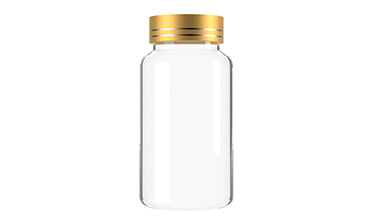 1.PET
1.PETPET (polyethylene terephthalate) is a plastic material.
Advantages of PET: The plastic has the characteristics of lightweight, high transparency, impact resistance, and resistance to breakage. It can also prevent carbon dioxide gas, keep the soda "gas", good storage, and emphasize the technical trend of heat resistance and pressure resistance. The bottle became the main drinker of today. Many beverages that require high-temperature bacteria to be filled, such as flavored water, fruit juice, dairy products, drinks, sports drinks, etc., are also packaged in PET bottles one after another. PET bottles have become the main packaging materials for beverage products. PET bottles are gradually replacing traditional packaging materials because of their low environmental pollution and energy consumption. With its heat-resistant, pressure-resistant functions, it has replaced various PVC bottles, bags, aluminum cans, iron cans, glass bottles, etc., and has become the packaging material with the most growth potential.
PP is polypropylene, which has the advantages of transparency, strength, and heat resistance, and the price is lower than traditional materials.
1. PP bottles can be hot-filled at 100°C. For example, juice and jam products need to be packaged at this temperature, while the filling temperature of ordinary PET bottles cannot be higher than the glass transition of 76°C. Because BOPP bottles can withstand high temperatures above 100°C, they are widely used in functional beverage packaging.
2. The moisture barrier performance of PP is about 5 times that of PET, and the price of PP preform production equipment is lower than that of PET preform production equipment.
3. PP bottles have a slower processing speed and poorer physical properties than PET bottles, which are the main reasons why they cannot be widely used.
4. PP has a slower rate of absorbing and dispersing heat than PET. Therefore, not only the energy consumption is higher than that of PET bottles, but the molding and cooling cycle is also longer, resulting in the production efficiency of PP being 25% lower than that of PET.
5. The processing temperature of the PP bottle stretch-blow molding is only 5℃. Compared with the processing temperature of 15℃ for PET bottles, the shutdown rate and the rejection rate are greatly increased.
6. The oxygen and carbon dioxide permeability of PP bottles is about 30 times that of PET bottles, making it impossible to be widely used in barrier packaging of carbonated beverages like PET.
PE plastic bottle is a kind of thermoplastic resin made by polymerization of ethylene.
Odorless, non-toxic, feels like wax, has excellent low temperature resistance (minimum use temperature can reach -70~-100℃), good chemical stability, and can withstand most acids and alkalis (not resistant to acids with oxidizing properties), insoluble in general solvents at room temperature, low water absorption, excellent electrical insulation performance; but it is very sensitive to environmental stress and poor heat aging resistance.
Plastic medicine bottles are generally made of PET, because PET material has the advantages of not easy to break, good sealing performance, moisture-proof, hygienic, and meets the special requirements of medicine packaging. It can be directly used for medicine packaging without washing or drying. , Is an excellent medicinal packaging container.
Secondly, HDPE (high-density polyethylene), PE (polyethylene) and PP (polypropylene) are also often used to make plastic medicine bottles. Among them, PET and PP are stable, transparent and translucent when uncolored, so these two materials are suitable for packaging liquid medicines; PE plastic bottle medicine bottles are mainly used for packaging solid capsules and oral tablets.
Request A Quotation